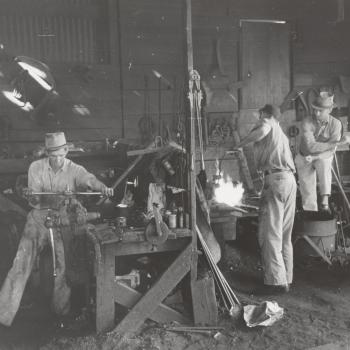Confession: the Abandoned Sacrament
The practice of regular confession formed Catholic identity in our country over many decades, promoting a sense of belonging. It provided a clear moral method for a seemingly well-defined world. It conveyed that hard things are worth doing. The sacrament also taught equality in that the commonality of sin could be seen every Saturday afternoon. To be sure, “for some people confession was meaningful and consoling,” details James O’Toole in For I Have Sinned: Rise and Fall of Catholic Confession in America (Harvard University, 2025).
Starting in 1968, however, “with a speed that may fairly be described as breathtaking, confession all but disappeared.” Already by 1975 a full 38% of self-identified Catholics never went to confession. Responding to a 1985 survey, clergy said the sacrament is “close to dead.” Yes, there are recent reports of students at the University of Notre Dame and a few other places lining the aisle for confession. Yes, a handful of the usual suspects still find their way to a parish confessional box or room now and then. “But the general picture remains unchanged,” O’Toole writes.
O’Toole begins by stating his challenge as a historian. The sacrament was inviolable. No matter what, a person’s confession was never disclosed. So how to find data? O’Toole patiently gathers plenty of material to produce an interesting, credible story. His sources include old Catholic magazines, particularly the “Question Box” columns, plus old parish bulletins, diaries, surveys of penitents and more.
Why the abandonment? Is there a way to revive the sacrament? If so, how?
The decline of confession was caused by all the modern cultural trends that erode the sacred and contribute to lower church membership. Additionally, internal factors, both those of commission and omission, dealt damaging blows.
For decades second graders (parochial and public schoolers) learned the basics of confession as a prerequisite to their first communion. Invariably both the formula and the content of one’s grammar school confession persisted. Eventually, adults decided that the triviality of the exercise wasn’t worth their effort.
As children advanced in school, distinctions in morality appeared, including actual grace vs sanctifying grace, venial sin vs mortal sin, remote occasion of sin vs proximate occasion, sin of commission vs omission, and objective sin vs sin of full knowledge and will. During senior year of high school, students might hear about the complex principle of double effect. There also were lists about ethics for students to memorize, including the ten commandments, the six precepts or church duties and the seven works of mercy (now expanded to eight). Unwittingly this framework for morality could often overshadow a feeling of God’s loving forgiveness, the real purpose of the sacrament.
O’Toole devotes a chapter to the tension between psychological counseling and confession. As psychiatry developed from the late 1800s, it took a subtle toll on the Catholic outlook, “preparing the way for a steep decline in the practice of confession,” he writes.
The Catholic teaching on contraception as proclaimed in 1930 and reaffirmed in 1968 distinguished between acceptable natural means and sinful artificial means. Catholics quickly challenged the premise of the 1968 teaching. They protested, deciding that the confessional box was irrelevant to their intimate behavior.
In 1984 came a report about the child abuse of Fr. Gilbert Gauthe of Louisiana. Revelation of hundreds of other cases followed. More Catholics stopped confessing sin through a priest, scandalized by the terrible hypocrisy of bishops and other clergy regarding this deviance.
Is a comeback possible for this sacrament? The 1974 change in the name of the sacrament from confession/penance to reconciliation/forgiveness better reflects its good purpose. But that alone has not affected the numbers. In the early 1970s an experiment with a communal form of reconciliation became popular in parishes. For a time, it drew large numbers. However, the Vatican and local bishops disapproved of the form beginning in 1976. Also, Catholics began to understand the penitential rite during each Mass as close enough to the older type of confession which they abandoned.
Here and there, O’Toole mentions social sin, a concept found in both theology and the social sciences. A few young adults use the term in describing their sensitivity to destruction of the environment or in their opposition to racism and the persistence of homophobia.
There are young adults who in small groups and in movements have the courage to voice their complicity in social sinfulness. With patient listening, the whole church might hear from them elements for a fresh sacrament of penance. There is certainly a need for objective morality today, for reverence and for genuine forgiveness. Our libertarian culture now reduces all behavior to the art of the deal. An alternative culture of responsibility and mercy awaits creative types to devise necessary rituals.
Droel edits a print newsletter on faith and work, INITIATIVES (PO Box 291102, Chicago, IL 60629).









